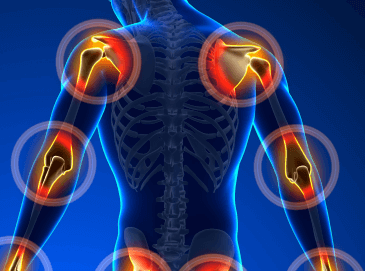Hip arthritis is a common condition that affects millions of people worldwide. While there are various treatment options available, Platelet Rich Plasma (PRP) injections are gaining popularity as a non-surgical, minimally invasive treatment option for hip arthritis. In this blog, we’ll take a closer look at how PRP injections work for hip arthritis, what to expect during and after treatment, and some potential benefits and drawbacks of this treatment option.
What is Hip Arthritis?
Hip arthritis is a degenerative joint disease that causes the cartilage in the hip joint to wear away, resulting in pain, stiffness, and reduced mobility. Over time, the bones in the hip joint can become damaged, leading to further pain and discomfort.
How Do PRP Injections Work for Hip Arthritis?
PRP injections involve injecting a concentrated solution of a patient’s own platelets and growth factors directly into the affected area. In the case of hip arthritis, PRP injections are typically administered into the hip joint.
PRP injections work by stimulating the body’s natural healing processes. The platelets in the PRP solution contain growth factors that help to promote the repair and regeneration of damaged tissues. When injected into the hip joint, the growth factors in the PRP solution can help to reduce inflammation and pain, and promote the healing of damaged cartilage and bone tissue.
What to Expect During and After PRP Injections for Hip Arthritis
PRP injections for hip arthritis are typically performed on an outpatient basis and take less than an hour to complete. Patients may receive a local anesthetic to numb the area before the injection, but typically do not require sedation.
After the injection, patients may experience some soreness or swelling in the hip joint for a few days to a week. However, most patients are able to resume their normal activities within a few days after the procedure.
It’s important to note that while some patients may experience immediate relief from pain and stiffness after the injection, it can take several weeks or even months to see the full benefits of PRP injections for hip arthritis. Patients may require multiple injections over several months to achieve the best results.
Potential Benefits and Drawbacks of PRP Injections for Hip Arthritis
PRP injections for hip arthritis offer several potential benefits, including:
- Non-surgical, minimally invasive treatment option
- No risk of adverse reactions to donor tissue or artificial materials
- Reduced risk of infection and other complications compared to surgical treatments
- Potential for long-lasting pain relief and improved joint function
However, there are also some potential drawbacks to consider, including:
- Some patients may not be good candidates for PRP injections, such as those with severe joint damage or those who are taking blood thinners
- The cost of PRP injections may not be covered by insurance and can be expensive
- While many patients report positive results, PRP injections may not work for everyone and may require multiple injections over time
Overall, PRP injections are a promising treatment option for hip arthritis that can offer long-lasting pain relief and improved joint function. If you are considering PRP injections for hip arthritis, be sure to discuss your options with an experienced healthcare provider and weigh the potential benefits and drawbacks before making a decision.








